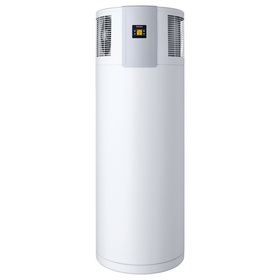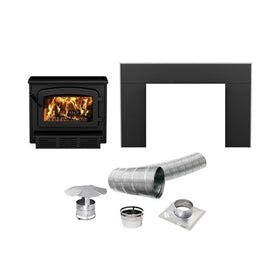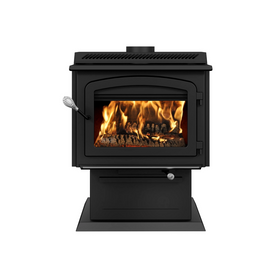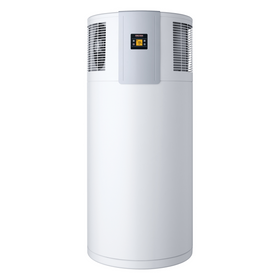
How to Measure What Matters in Your Home
Last Updated: Mar 3, 2025Most of us want to do more to help our world become more sustainable and make a better future for the next generations. Yet knowing where to start can be challenging. Other than recycling our trash and maybe changing out a light bulb or two, what can we do that will (a) make a difference, (b) not cost too much, and (c) not require a sacrifice in comfort and convenience?
Under the adage, "what gets measured gets managed," we have to begin with baseline measurements. Businesses rely on key performance indicators (KPIs), or metrics, to measure their success. For instance, grocery stores look at sales per square foot, and airlines look at costs and revenue per available seat mile.
How do organizations measure sustainability? There are many frameworks and tools available today. However, the Global Reporting Initiative (GRI) is the most common: "of the world's largest 250 corporations, 93% report on their sustainability performance, and 82% of these use GRI's Standards to do so," according to GRI. GRI Standards are considered best practices for businesses to report on economic, environmental, and social impacts.
That's all good news, but there's no standard report or best practice when it comes to measuring our homes' sustainability. So, where do we begin? If a more sustainable home is a goal, what are the right metrics?
Taking a cue from the business community, cities, and non-profit organizations, the three most commonly used metrics are:
- Energy consumption/greenhouse gas emissions
- Waste and
- Water consumption
Why are these the three metrics? Because they matter the most—we all need water to live, fresh air to breathe, and land to live on and grow food—and it is possible to measure them. So, let's start there. For each metric, I'll take you through how to determine your usage and set goals.
Table of Contents
- Energy Consumption / Greenhouse Gas Emissions
- Waste
- Water
- What About Health?
- Getting Started

Energy Consumption / Greenhouse Gas Emissions
Energy consumption is probably the most important and most talked-about metric. It has top priority because it is a measure of your carbon footprint—and it's also one of the most costly components of operating your home. So if you can reduce energy consumption, lower your carbon footprint and save money, it's a win-win.
Measuring Energy
How do you measure your home's energy consumption? Your consumption consists of electricity and natural gas (although in some areas, it's oil or propane, or just electricity). When measuring electricity, the unit is kilowatt-hours (kWh). For gas, the unit is typically therms or BTUs (British thermal units). In each case, your monthly utility bill will show you your consumption. You can also contact your utility directly and ask them to provide you the data for the past 24 months so you can look at the trends monthly and annually.
Once you get a handle on your usage, you can stop there and work toward reducing both of those numbers year-over-year.
How Does Energy Usage Convert to Carbon Footprint?
Suppose you want just one number that is more related to your carbon footprint. In that case, the problem is, you cannot add gas and electricity information together: a kilowatt-hour + a therm = what? It isn't very sensible. However, you can convert your electricity and gas usage into metric ton equivalents of carbon dioxide (also known as greenhouse gas emissions). And it's not that hard!
The U.S. Environmental Protection Agency (EPA) has a greenhouse gas equivalency calculator to enter your data, and it will convert it for you. If you want to expand your carbon footprint analysis, you can even add in how many gallons of gasoline you have purchased to fuel your car over the past year.
One caveat on the electricity conversion: the calculator uses default numbers for grid-connected power—the average of the entire United States. Your emissions data will be high if your utility gets more of its energy from renewables and less from coal or natural gas. And conversely, if your local utility burns more coal than the average, your reported emissions will be too low. The same caveat holds for other online carbon footprint calculators. You can skip that part if you know you get all of your power from solar or hydro because your electricity consumption is clean.

Setting an Energy Goal
Now for goal setting. What do you want to do? Do you want to become a net-zero energy home (meaning you produce the same amount of energy as you consume each year)? Many cities and states set that as a goal, so buildings (including homes) will have to get on board. The International Living Future Institute (ILFI) provides both commercial and residential Net-Zero Energy certification. That is undoubtedly the ideal.
A more realistic goal, though, might be to work towards a 10% reduction every year. Getting an energy audit and making your home more efficient is the best way to start. Looking at your usage annually (like when you have to do your taxes) can keep you on track or at least aware of how you are doing.
You may have seen those energy report cards from your utility provider on how "efficient" you are compared to your neighbor. Studies have shown that competition influences behavior. So, many utilities have partnered with Opower to issue these reports to make people more aware of their energy consumption, which is a good start. But take these comparisons with a grain of salt. According to an article in the Denver Post, Xcel Energy says the comparison "typically uses 100 similar customers located in the near vicinity of the customer receiving the report." But it does not consider the number of people in the house or how the home is utilized. These factors can have a considerable effect on total energy consumption at home.
A better metric for comparison purposes would be energy consumption per square foot per household member. But since we do not have access to that data yet, the best thing to do is to measure your consumption over time. Then, you can work toward trending that downward!

Waste
Why is reducing trash and waste important? There are many reasons. But, put, waste is a pollutant that damages our ability to support life. Waste, in the form of plastics, end up in our oceans and rivers. Landfills produce methane and contribute to global climate change. In addition to the Net-Zero Energy goal, many cities and organizations are adopting a Zero Waste goal. The United States Green Building Council manages a building certification program called TRUE Zero Waste to aid in these goals, but it is unfortunately not available for homeowners.
Measuring Waste
Waste is a slightly more tangible sustainability topic than energy. We can see it every day—what goes into the garbage, recycling, or compost bin. The definition of "zero waste" actually means zero waste that goes to the landfill or incinerator; waste that gets recycled or composted is not considered "waste" (for better or worse!).
The most common metric used in rating systems like LEED is the "waste diversion rate."
Waste Diversion Rate = the total amount of waste NOT sent to the landfill or incinerator, divided by the total waste leaving your home.
You want that number to approach 100%. The unit measured can be in either weight (pound or kilograms) or volume. Weight is the preferred method for commercial rating systems, but it might not be realistic for homeowners.
If you cannot or do not want to weigh your trash, compost, and recycling, or calculate a diversion rate, you can keep a clipboard by your trash bin. Then, each week, when you take out the trash, give it a ranking on how full it is (e.g., half full, a quarter full, etc.).

Setting a Waste Goal
Unless you are a super-duper zero-waste advocate like blogger Kathryn Kellogg, it can be pretty tough to get to your home to zero waste. To help you on your way, we've written about some tips to get you on that path. Becoming aware of your trash is the most critical first step.

Water
If freshwater is abundant in your area, this may not be a big concern for you. But in many parts of the country, water shortages and droughts force homeowners to reduce water consumption. In any case, you pay for your water, so reducing your water will save you money.
Measuring Water
What is the water metric? It's usually just total gallons or liters. Your water bill, though, may show some other "unit." In Minneapolis, for example, one water unit = 100 cubic feet, or about 748 gallons. You can use whatever unit is most straightforward as long as you consistently add up both indoor and outdoor water usage. Looking at your monthly bills or calling your water provider and asking for a full year's worth of data is the best place to get your usage information.

Setting a Water Goal
What is your water goal? It's silly to think you could get to zero indoor water consumption, as we need water for daily living. Though the ILFI does have a Net Positive Water Imperative. This initiative aims for 100% of the water needs to be "supplied by captured precipitation or other natural closed-loop water systems, and by recycling used project water." Again, that is the ideal.
An excellent metric for comparison purposes of indoor water usage would be gallons used per household member. But since that data is not easily accessible, measuring your usage on an annual basis is a great start. Then, look for easy, inexpensive ways to reduce your usages, such as finding EPA Water Sense-labeled fixtures and low-flow faucets and toilets.
For outdoor water usage, net-zero is a more easily attainable goal. Many landscape designs need zero (called xeriscaping) or minimal extra watering; you need to be open to giving up that lawn!

What About Health?
From a sustainability standpoint, we, of course, are missing a vast topic: our health. In my book, Building a Sustainable Home: Practical Green Design Choices for Your Health, Wealth, and Soul, I put health as an essential value. What's the metric for our health? There are a few ways to measure things that impact our health: air and water. (See our articles on measuring indoor air quality and water quality) But our health depends on so much more: food, exercise, relationships, genetics, and many things beyond our control.
So, we focus on what we have more control over in our homes: energy, waste, and water—three sustainability metrics that matter.

Getting Started
It may seem overwhelming, but it can be fun! Start with just one metric that compels you the most, and ease into it. Try posting the results on the refrigerator—or better yet, let your neighbors know what you are doing. Then see if your results improve. When they do, please let us know at Rise through our Facebook Group. We love to hear about homeowners' stories and hopefully inspire others to make a difference!
Melissa Rappaport Schifman
Melissa became the Twin Cities’ fifth LEED for Homes Accredited Professional (LEED AP) and completed the work necessary to get her own home LEED Gold Certified, the basis for her book, Building a Sustainable Home: Practical Green Design Choices for Your Health, Wealth, and Soul, (Skyhorse Publishing, August, 2018). With her corporate experience in finance, marketing, and business development, and an MBA and Master’s in Public Policy from the University of Chicago, Melissa has been providing sustainability advisory services to businesses, governmental agencies and non-profits, focusing on strategic and operational change that provide bottom-line financial returns. She has led the LEED certification of two million square feet of commercial buildings, written GRI-compliant Corporate Sustainability Reports, is a LEED Pro Reviewer and LEED mentor with the U.S. Green Building Council. She is the founder of Green Intention LLC where she writes about sustainable home living.










